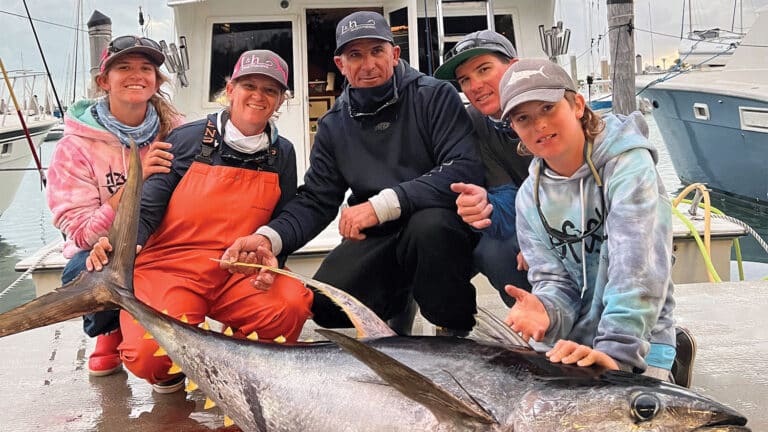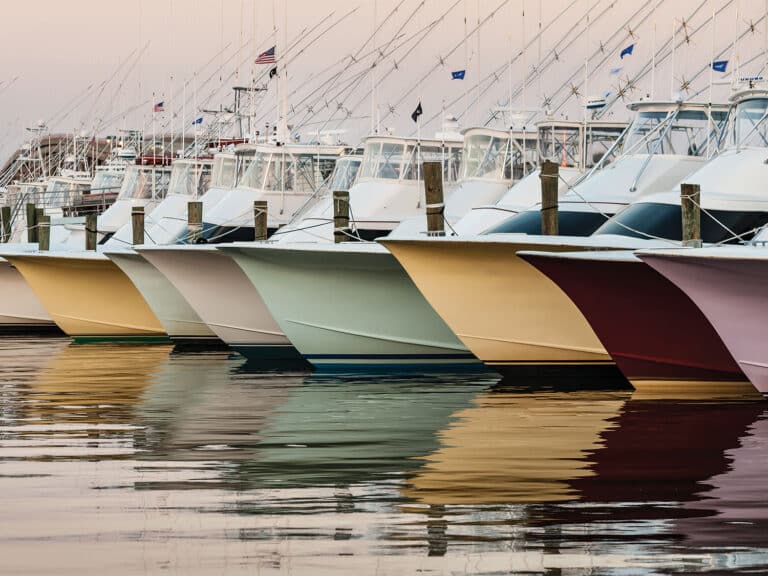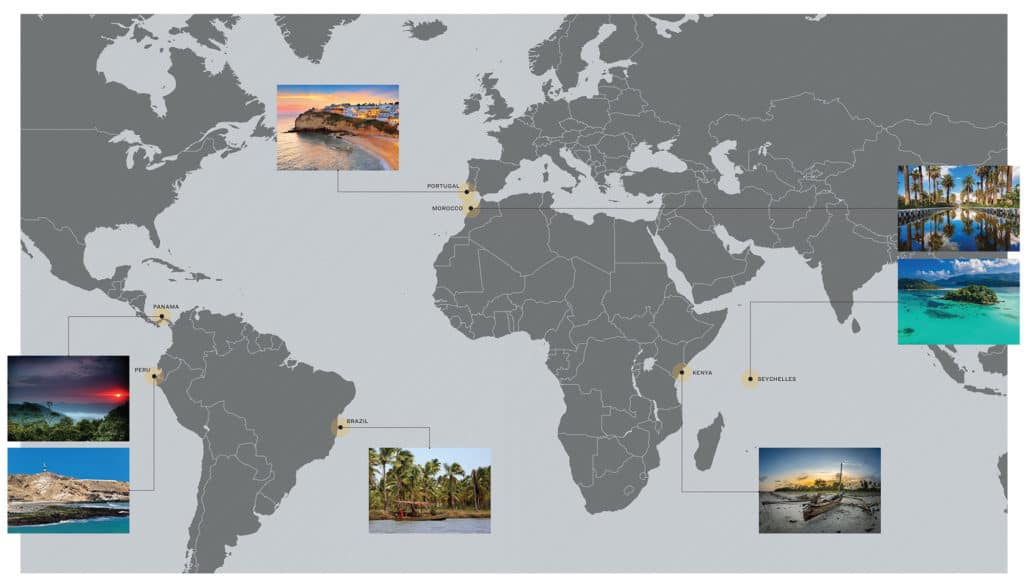
As we emerge from the shadow of a global pandemic, it’s time to dust off the passport and think about getting back on the road. And while the perennial-favorite hotspots in the Caribbean, Central America and Australia will all produce outstanding fishing, now is also an opportunity to take a look at some other destinations—ones that don’t receive as much of the limelight but offer not only surprisingly good action as well as a revealing look at different cultures and lifestyles. The centuries-old markets and mosques of Morocco. World-renowned Portuguese wineries. A big-game safari in Kenya. It’s all on the radar for the adventurous traveler who’s looking for something more.
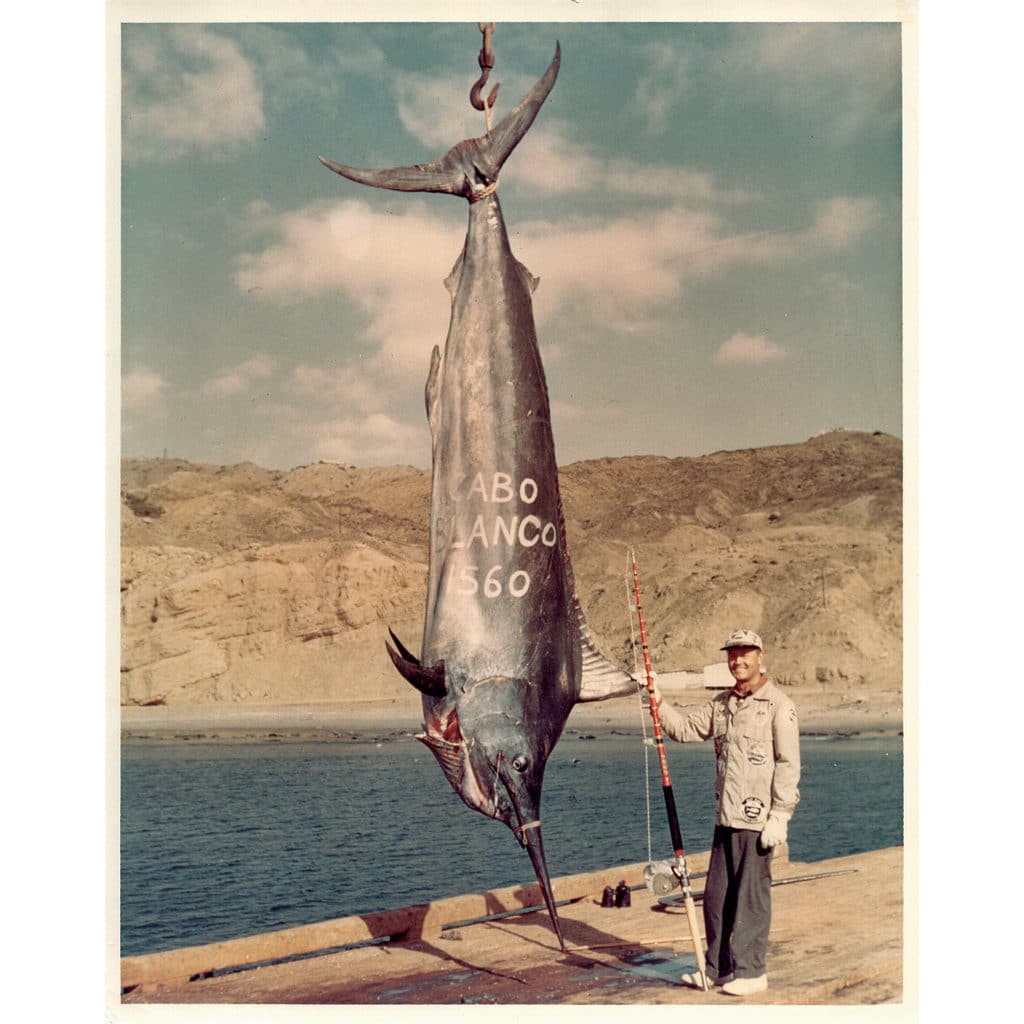
Peru
Most big-marlin aficionados will recognize Cabo Blanco, Peru, as home to the all-tackle world-record black marlin—Alfred Glassell’s 1,560-pounder caught in 1953—but it’s also home to the ladies all-tackle fish as well: a 1,525-pound black landed the following year by Mrs. Charles Hughes. Now Peru is set for a reemergence as a premier destination with a new resort and marina development just 25 miles north of Cabo Blanco and its historic fishing grounds.
Marina Coast Peru is a master-planned resort that will feature an exclusive club membership that combines a world-class 300-slip marina with legendary Peruvian restaurants, a private airport and a wide variety of activities, all in one easy-to-reach destination. And with a coastal mountain range and southwestern views of the Pacific Ocean, spectacular sunsets are a bonus.
Watch: Learn to make a bonito strip teaser here.
The northern coast of Peru is characterized by a much different climate and geography than the rest of the country, with a tropical dry climate and desert landscape with an average year-round temperature of 75 degrees. Offshore, the Humboldt Current sweeps cold, nutrient-rich water up from the south, where it collides with warmer water from the equator, creating virtually ideal fishing conditions.
According to local charter captains, the billfish season runs from around the middle of December through mid-April and into May, depending on sea conditions; February and March are considered the prime months. Striped marlin are the mainstay for the recreational-fishing fleet, with good-size fish averaging around 175 to 200 pounds around the Mancora Bank; preferred tactics involve trolling either lures or dead ballyhoo. The black marlin fishing is also quite good, with peaks in November and March. There are enough big blacks around to make this a definite heavy-tackle fishery. Large wahoo are also very abundant, ranging in size from 75 to 140 pounds, and yellowfin tuna are prevalent from March through November.
For More Information: marinacoastperu.com
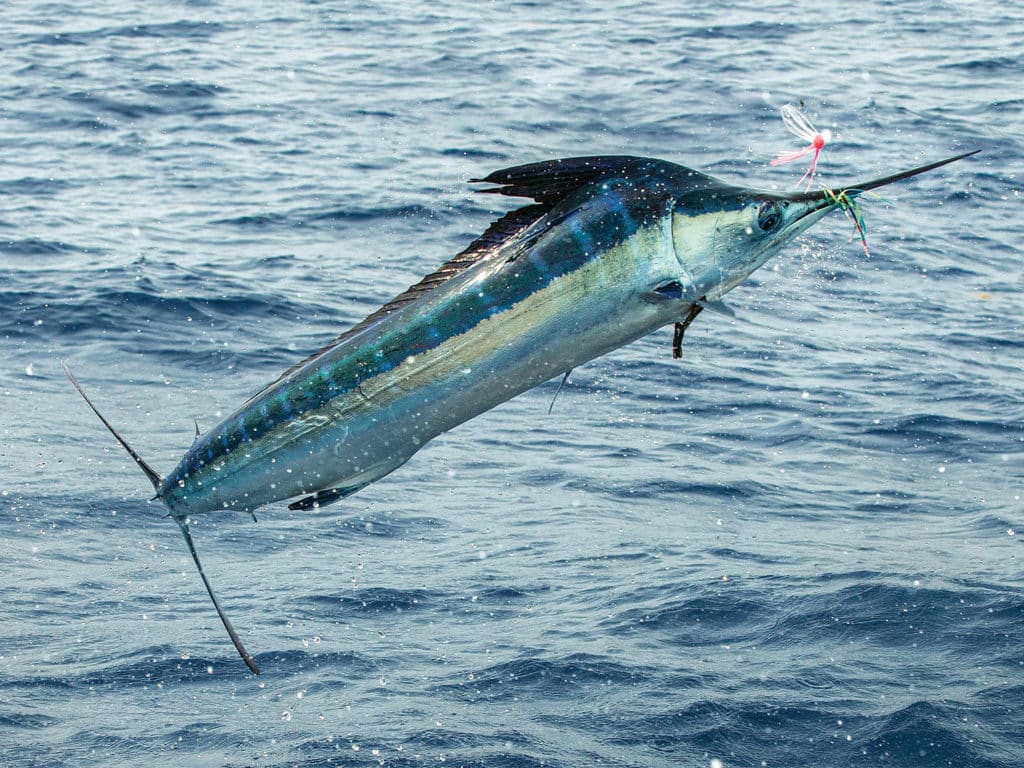
Portugal
With its beautiful sandy beaches scattered amid soaring, cave-riddled cliffs and near-perfect sunny weather, the Algarve in southern Portugal is a tourist mecca for Europeans, and yet it isn’t as well-known in the fishing world as the Portuguese islands of the Azores and Madeira. But part of that allure, according to the world-record-chasing duo of Gary and Sherrell Carter, is the unknown.
“A couple of seasons ago, we took our 45-foot G&S, Silver-Rod-O, to the Algarve with our team—Capt. Yoan Alcala, Marty Bates, Adrian DeSilva and Brad Batterton—and spent some time targeting white marlin on ultralight tackle. In addition to good numbers, with double-digit raises being the norm, many of the fish were really nice sized as well,” Gary says.
“At midday on October 1, 2018, Sherrell hooked up a super-aggressive white on 2-pound-test line that did a number of explosive jumps off the starboard corner of the cockpit,” Gary continues. “Yoan had the boat positioned perfectly, and with the marlin in midair, Adrian was able to quickly grab the leader, but he instinctively let go. Based on the trajectory of the fish, a full set of wraps would have put too much pressure on the light leader and thin-gauge hook. A few minutes later, Adrian grabbed the leader again, and Marty and Brad sank the gaffs. When we weighed the fish in Vilamoura, the digital scale read 105.7 pounds, beating the current record of 56.5 pounds, which was set 25 years ago in Venezuela.”
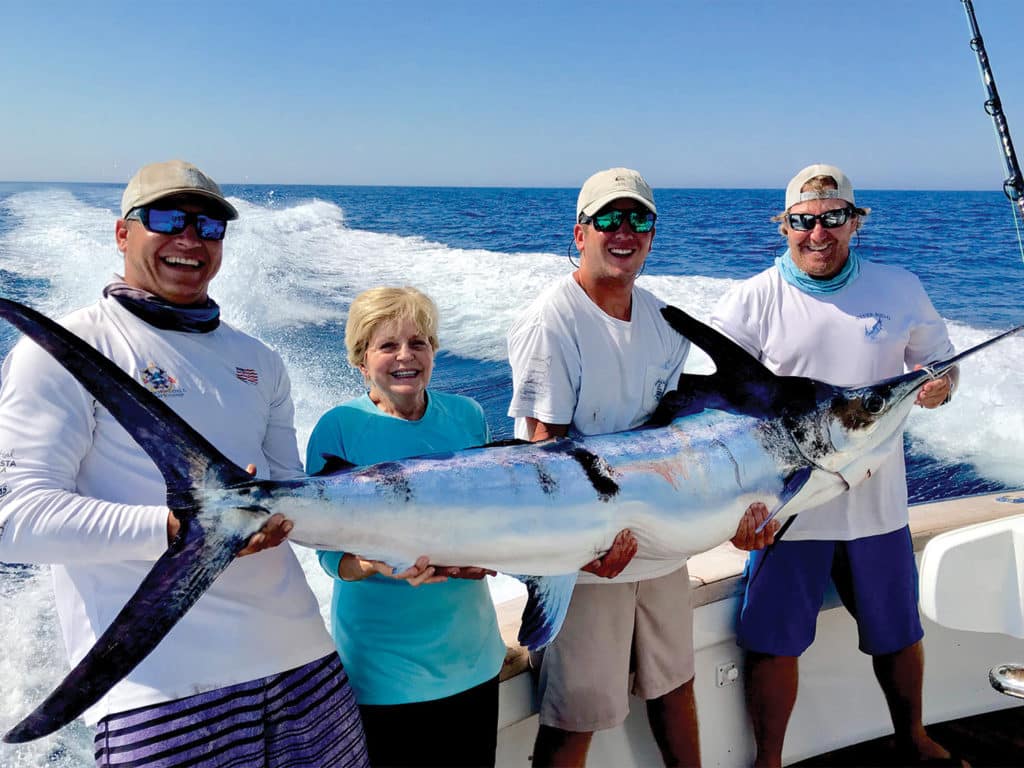
The following morning, about 12 miles offshore, Gary says the team had just lowered the outriggers and set the spread when a nice white attacked the right long. After a great tease-and-switch and an exciting 45-minute fight, the team had Sherrell’s second record of the trip: a 98.6-pound white marlin on 8-pound-test.
Back ashore, the Carters complimented the accommodations, saying that Marina de Vilamoura was amazing; it’s completely protected from storms and surrounded by a great selection of restaurants, hotels and shops, with thousands of people on the promenade each evening. In addition, they also toured several wineries within an hour or two’s drive from the marina, with excellent accommodations and spectacular dinners highlighted by some of the best wines in the world.
For More Information: marinadevilamoura.com/en
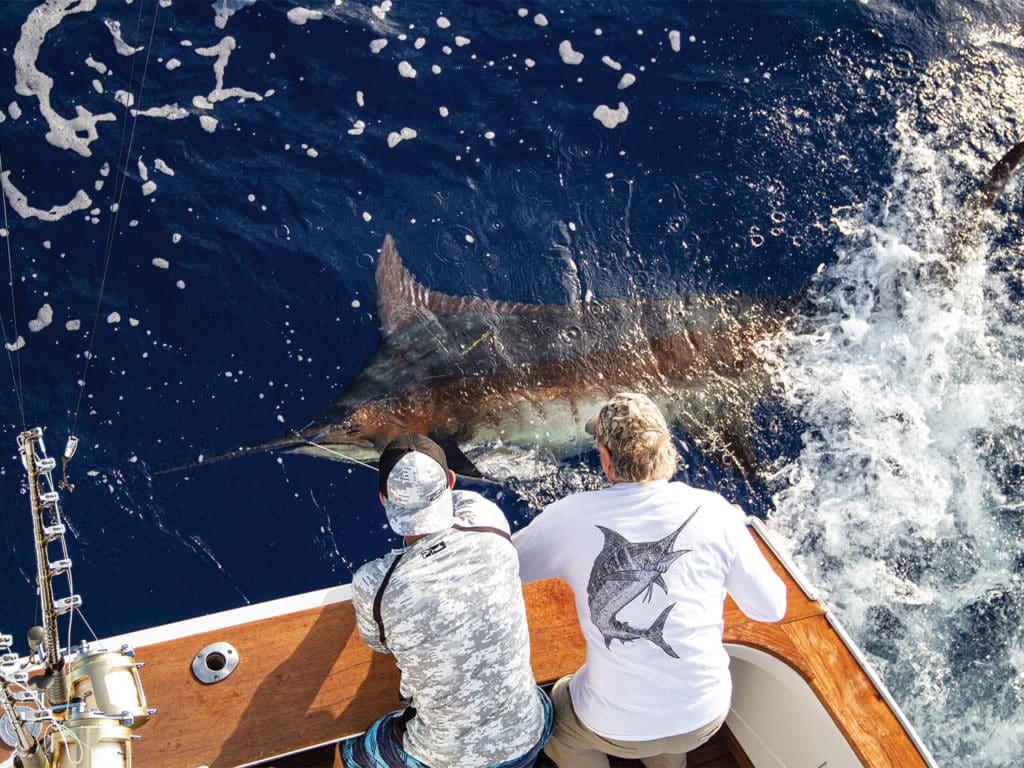
Brazil
According to Capt. Shawn Wallace, an Australian living in Brazil for nearly two decades, Canavieiras is the country’s best-kept secret. “The Royal Charlotte Bank runs east for 55 miles off the coast, with the current running predominately south, hitting the northern edge of the bank,” he says. “This produces upwellings that provide all the nutrients necessary for the baitfish to thrive, which fuels the food chain all the way up to blue marlin at the top.” He says the edge of the bank is about 300 feet deep, dropping dramatically to 600 and then 900 feet; in one spot, the edge goes from 300 to 3,000 feet within a quarter-mile.
With the best fishing from October through March, the bite can be spectacular on the Royal Charlotte anywhere from 18 to 40 nautical miles offshore. “In 2018, we released 171 billfish in a 70-day season: 125 blue marlin, 29 white marlin and 17 sailfish, with four grand slams,” Wallace says. Fifty of the blues were over 500 pounds, and two he called over 1,000 pounds, caught and released just two days apart. In 2019, fishing 78 days, Wallace and his team released 131 billfish: 88 blues, 25 whites and 18 sails, with four grand slams and many more big blues in the mix as well.
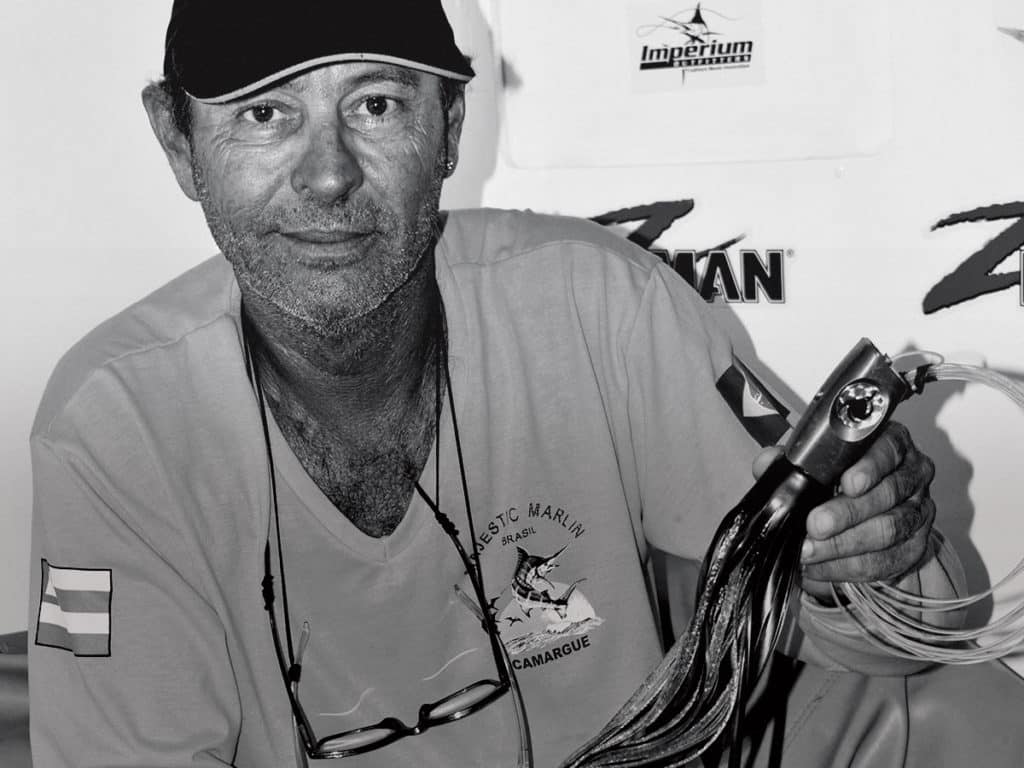
Canavieiras is the closest port to the Royal Charlotte Bank; it’s part of the Costa do Cacau—Brazil’s Chocolate Coast—with a population of around 40,000 year-round residents. Wallace says the city is at the end of the road and is one of seven small islands in the area, and that it’s very safe for visitors. His operation has accommodations for clients as well. “Most people fly into Rio de Janeiro or São Paulo and do some sightseeing before heading up to Ilheus in the state of Bahia,” he says. “Salvador, the capital of Bahia, also has an international airport and is a nice, safe city for tourists; it’s only a 30-minute flight south to Ilheus, where we pick up our clients for the 75-mile trip down to Canavieiras.”
For More Information: Capt. Shawn Wallace, Majestic Marlin Brazil, majesticmarlin.com.br
Morocco
“Mohammedia has been a hidden gem when it comes to white marlin—the fishery itself is unique compared with other hotspots that I fish,” says Capt. Stuart Simpson, who has led several anglers to world records in these waters aboard the 40-foot Gamefisherman Capri.
The currents that run out of the Gibraltar Straits in the summer mix with the warm southern Atlantic currents, and there is also an abundance of anchovies, which attract white marlin in nearly unbelievable numbers. “It’s an amazing fishery. The run offshore is about 40 nautical miles from Rabat, which is very comfortable since the wind doesn’t blow more than 10 knots during the season from early August through late September, if it blows at all. And although it’s a short window to fish, the bite can be red-hot.”
Simpson says he’s been overrun with huge wolf packs of white marlin numbering in the hundreds, if not thousands. And they run large in size as well, with the average fish around 50 to 60 pounds and larger ones easily over 100 pounds in the mix.
“We prefer to fish with two flat-line teasers on rods and that’s it,” he says. “These fish are smart and can be tricky to catch at times, so we find that the less we have in the water, the easier it is to get them to switch to live or dead baits or the fly, depending on their behavior and the angler’s preferred methods,” Simpson says.
Back ashore in Mohammedia, there are several very nice hotels within five minutes of the marina, and Simpson feels that the destination is as safe as any other in the world.
For More Information: Capt. Stuart Simpson, [email protected]
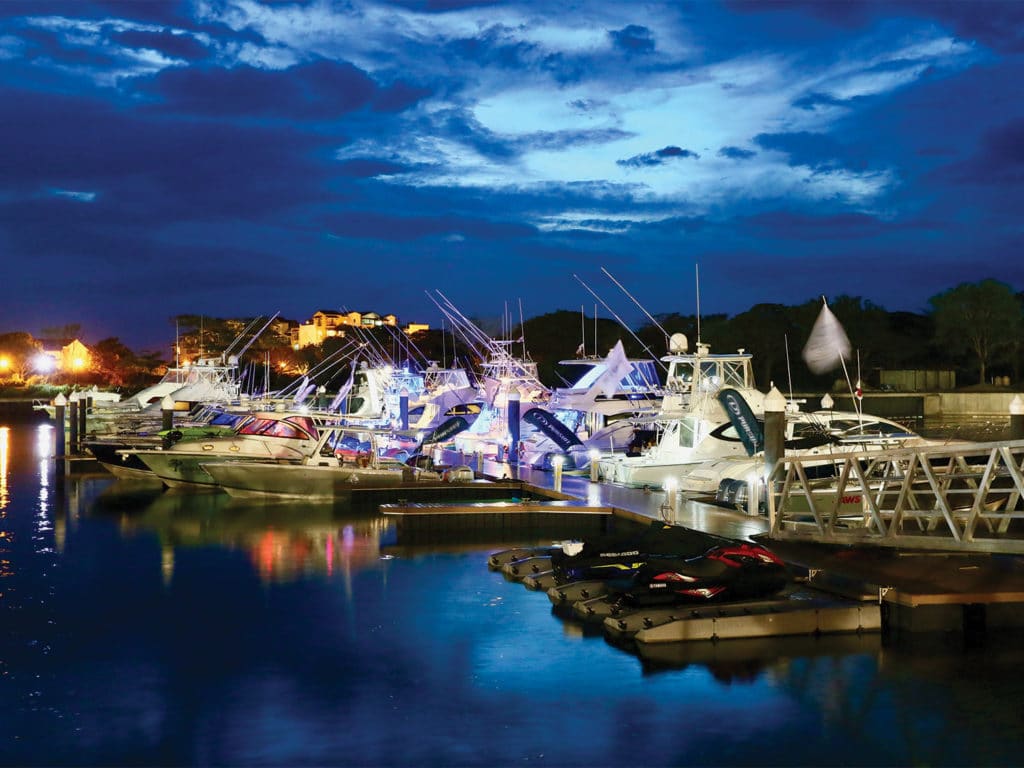
Panama
Although this Central American nation is notably famous for its sport-fishing opportunities, there is a new development—Buenaventura—that is attracting significant interest. It’s part of a beach community located on the Pacific coast at Farallon, approximately 60 miles southwest of Panama City. At its heart is Buenaventura Marina, with 60 in-water slips. The facility is brand-new, with a grand opening held in late 2019, and will provide great boating and fishing access to the Rio Hato region of Panama.
According to Charlie Morris, local sport-fishing expert and longtime resident, access to the prime fishing grounds is excellent because the marina is strategically located in the center of Panama, with a 50-mile run to the drop-offs. “Our canyon fishing is excellent for marlin, sailfish, tuna and mahi,” he says. On the horizon: Morris will be setting up Azuero Lodge at Buenaventura, a high-end boutique charter service that will also include an apartment in the Marina Village for clients.
For More Information: buenaventura.com.pa
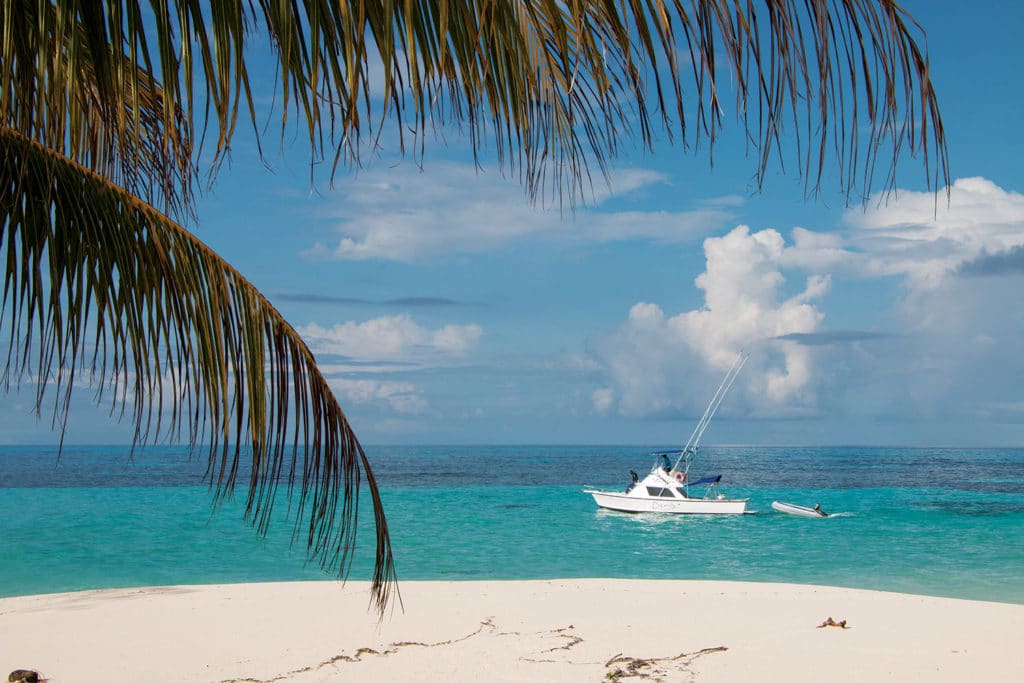
The Seychelles
This string of hundreds of islands in the Indian Ocean roughly 500 miles due east of Kenya is home to some outstanding fishing, with very little pressure from either local recreational or commercial operations. In June, the southeastern monsoon season kicks into gear, bringing cooler water temperatures and an abundance of yellowfin tuna to the waters around Mahe; find the tuna and you’ll find blue and black marlin as well. As is typical with the two species, the blacks will usually hold tight to the drop-offs and edges, and the blues will be out wide in deeper water. Sailfish are also common in Seychelles waters on the inshore grounds. Most boats will pull dredges, teasers and larger lures in tight, with smaller lure/strip-bait combinations from the outriggers. Live-baiting around the drop-offs and reefs is also a productive tactic, especially for black marlin.
The Seychelles is well-known as one of the world’s top fishing destinations for an extensive variety of species, including dogtooth tuna, giant trevally and many other gamefish. The scuba diving is also spectacular.
For More Information: Henry Riggs-Miller, [email protected]
Kenya
“One simply cannot beat central-east Africa in terms of value as a travel destination, with red-hot fishing, amazing wildlife in the parks and reserves, and the warmth and friendliness of the people,” says Capt. Calvin du Plessis, owner of Soolyman Sportfishing in Malindi, Kenya.
The fishing season starts in July, a couple of months into the southwesterly monsoon trade winds locally known as the Kusi, which is the rainy season; the action centers on the banks and reefs located about 5 miles from Malindi and Watamu. The preferred method of fishing is live-baiting with small tunas for black marlin and sailfish; yellowfin tuna weighing from 20 to 100 pounds congregate around the offshore banks and ridges, and can be caught trolling lures or live-baiting as well as on jigs and poppers. By October, the trades begin to moderate and the sailfish show up in good numbers, so it’s time to lighten up on the conventional tackle or even break out the fly rod.
Read Next: Learn how to utilize different baitfish species while traveling.
By the end of November, the wind switches again; by mid-December, it blows from the northeast, marking the start of the primary billfish season. Boats head up to 40 miles offshore to fish the banks and ledges that drop to over 3,000 feet. From December through April, all billfish species are found, and it’s this time of year they see frequent grand slams, super slams and, on occasion, even rare fantasy slams: five billfish species in a single day. There is a well-established nighttime fishery for swordfish, but du Plessis reports that daytime deep-dropping is also very effective.
The months from July through September also mark the land migrations, with huge herds of wildebeest among many others crossing the vast African plains of the Maasai Mara. There are many national parks and conservancies in Kenya, so a safari to this area should definitely be on the list for any visitors.
For More Information: biggamefishingkenya.com, [email protected], malindiseafishingclub.com





